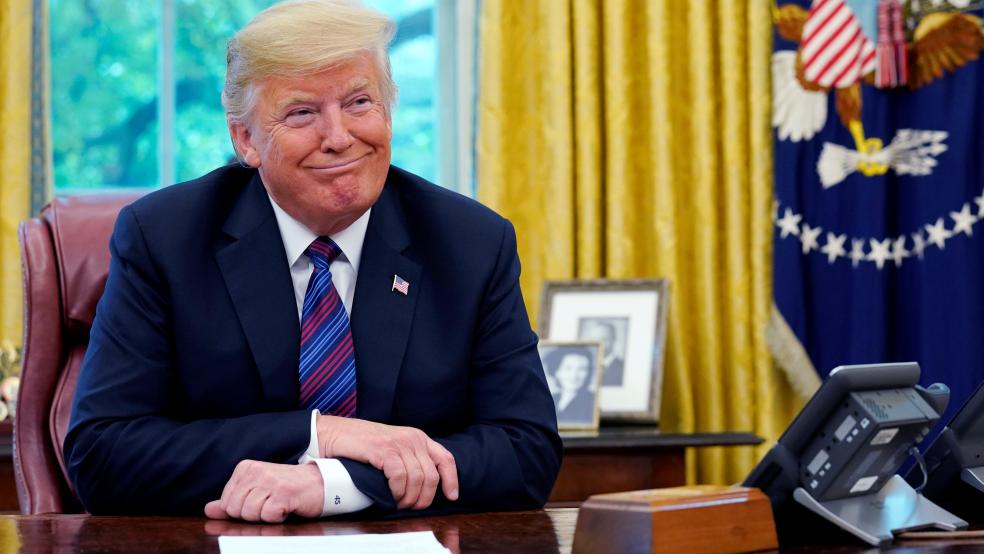President Trump instructed his cabinet secretaries Wednesday to reduce their departmental spending by 5 percent or more next year.
“Some of you will say, ‘Hey, I can do much more than five,’” Trump said at a Cabinet meeting.
The cuts could affect the military as well, despite Trump’s desire to increase defense spending. The Pentagon’s budget would “likely be $700 billion,” the president reportedly said, indicating a possible 2.3 percent drop.
In an earlier interview with Fox Business Network, Trump said achieving the cuts wouldn’t be difficult. "It's not as tough as you think, and frankly there's a lot of fat in there," he said. White House adviser Kellyanne Conway told Fox that Trump is "asking them to cut the fraud, the waste, the abuse. … not the essentials."
The comments came two days after the U.S. Treasury reported that the budget deficit hit a 6-year high of $779 billion in fiscal year 2018. The 17 percent year-over-year increase in the deficit was driven in large part by the tax cuts pushed through Congress by Republicans late last year, along with a $300 billion increase in spending for this year and next.
The Trump administration has been hinting recently that it would seek to cut spending for fiscal 2020, with Kevin Hassett, chairman of the president’s Council of Economic Advisers, saying last week that “deficit is absolutely higher than anyone would like” and that “you’ll see a much more aggressive stance” soon as far as the budget is concerned.
But could a 5 percent cut actually increase the deficit?
Zach Moller of the fiscally conservative Committee for a Responsible Federal Budget pointed out in a series of tweets that federal outlays are already facing steep cuts when spending caps return in fiscal year 2020, which begins next October.
Discretionary spending — which accounts for only 31 percent of all federal spending, and only 11 percent of nominal spending growth over the next decade, Moller notes — will be reduced by about 10 percent in the 2020 fiscal year once the caps take effect.
Assuming Trump’s spending reduction plan applies only to discretionary spending of the kind managed by his Cabinet secretaries, it would actually be a smaller cut than the reductions already accounted for in the Congressional Budget Office’s deficit projections. In other words, a 5 percent cut to discretionary spending in 2020 “is actually deficit increasing compared to CBO's baseline,” Zoller wrote.
The bottom line: Trump can ask for cuts — and he has before, with previous presidential budgets calling for steep funding reductions for some federal departments. But the budget is determined by Congress and lawmakers may choose to ignore or reject his requests, as they have in the past. The 2020 budget fight is just getting started.





